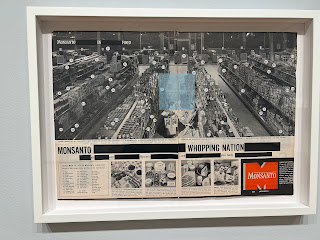The Black Experience in America: Social and Environmental Racism
The Black Experience in America: Social and Environmental Racism
By: Kyanna Gonzalez
Environmental racism and injustice can be seen in many forms throughout the world. Environmental injustice refers to how the unequal distribution of land and its resources can negatively affect poor and marginalized communities when compared to communities with more generated wealth and economic status. Poor and marginalized communities are often negatively affected by the environment that they reside in due to an inability to escape hazardous areas of toxic chemical manufacturing, resource extraction, and other human-driven impacts on the environment as a whole. Systems and policies implemented by the government and its institutions are used to economically limit racial minority groups. These policies such as redlining can directly impact racial and ethnic minority groups within the U.S and their ability to obtain environmental justice.
In Louisiana USA, a town called Reserve is considered to be the cancer capital of the country due to the presence of industrial plants that harm the environment surrounding the town (AJ+ 2018). An eighty-mile stretch of land in Louisiana known as cancer alley resides mostly poor people of color who experience extremely high rates of health complications due to the toxic chemicals emitted by these petrochemical sites relatively close by. Thus, the manufacturing of oils, gases, plastics, and chemicals at these sites is the main contributor to health complications (Vox 2020). Some of these toxic chemicals produced and emitted by these sites include chloroprene, nickel, and benzene. Chloroprene, for example, is a carcinogen that negatively affects the digestive system, kidneys, and liver cancers when absorbed by the human body as well as reproductive and heart complications (AJ+ 2018). The purpose of Chloroprenes' production on these sites is to be used for human recreations like the production of laptop covers and wetsuits. Furthermore, locals in towns like Reserve which is within the cancer alleys, come into contact with these toxic chemicals through digestion, respiration, and even absorption through the skin.
As the history of environmental injustices is tied to race and economic class, environmental injustices can be evident using maps that compare highly affected, unjust areas with the racial demographics of the area in question. For decades, toxic chemical and extraction sites have been established in areas where people of color and minorities reside. Policies like redlining were used to separate and label minority and black communities as less desirable and overall contribute to the increased establishment of industrial sites near poorer black communities (Vox 2020).
Environmental injustices affect people across the world and can be considered problematic as it represents racial and economic inequality. Residents from towns within the cancer alley express concerns that their health is being subjected to a profit margin for major cooperations as well as are subjected to other human recreational pleasure (AJ+ 2018). Efforts have been made by the local people in the cancer alley to draw awareness to locals of how their day-to-day lives are impacted and what can be done on a political level about these environmental injustices. Through the power of awareness and advocation of resources like money and representation, the locals in cancer alley hope to enact some political change.

Comments
Post a Comment